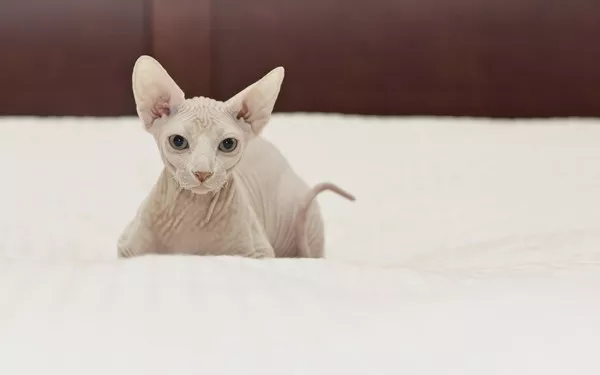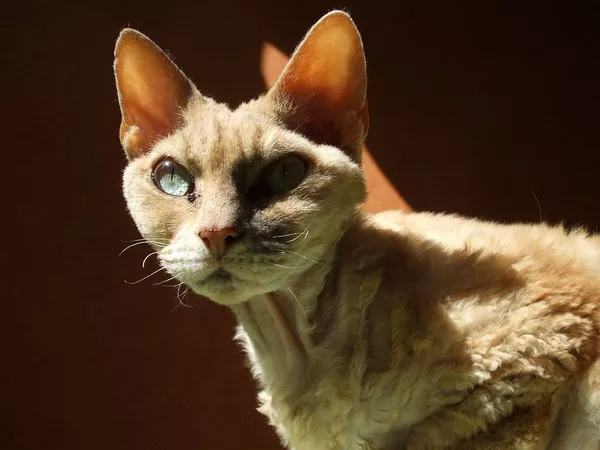The Sphynx cat, renowned for its distinctive hairless appearance, demands unique care and attention, particularly in the realm of grooming. Unlike their furry counterparts, Sphynx cats lack a traditional coat that helps regulate natural oils and maintain cleanliness. As a result, questions about their bathing frequency often arise. In this comprehensive guide, we delve into the world of Sphynx cat grooming, exploring the factors influencing their bathing needs, the steps involved in a proper bath, and tips for maintaining their skin health.
Understanding the Sphynx Cat’s Unique Grooming Needs
The Absence of Fur: A Grooming Challenge
The Sphynx cat’s hairless trait poses challenges in terms of grooming. While it eliminates the need for traditional brushing, it requires a focused approach to maintain skin health and cleanliness.
Oily Skin and Dirt Accumulation
Sphynx cats have oily skin that can lead to the accumulation of dirt and debris. Regular bathing is essential to prevent skin issues and maintain their overall well-being.
Factors Influencing Bathing Frequency
Individual Variations
Bathing frequency can vary from one Sphynx cat to another. Factors such as age, activity level, and individual skin characteristics play a role in determining how often a cat needs a bath.
Environmental Factors
The living environment also influences bathing needs. Outdoor exposure, dust, and climate conditions can contribute to the accumulation of dirt on the cat’s skin.
Health Considerations
Certain health conditions or skin issues may necessitate more frequent bathing as part of a veterinary-prescribed care routine.
Determining the Right Bathing Schedule
Assessing the Cat’s Skin
Regularly assess the condition of the cat’s skin. If you notice excess oiliness, dirt buildup, or skin issues, it may be an indication that a bath is needed.
Monitoring Odor
Sphynx cats are known for their lack of traditional cat odor. If you detect an unusual or persistent odor, it might signal the need for a bath.
Observing Behavioral Cues
Some Sphynx cats enjoy water and may show enthusiasm during bath time, while others may display signs of stress or discomfort. Understanding your cat’s behavior helps determine an appropriate bathing schedule.
The Bathing Process: A Step-by-Step Guide
1. Gathering Supplies: Before initiating a bath, gather all necessary supplies, including cat-friendly shampoo, a soft towel, a non-slip mat, and a gentle brush.
2. Preparing the Cat: Create a calm and quiet environment for the cat. Trim their nails beforehand, ensuring a safer bathing experience.
3. Wetting the Cat: Use lukewarm water to wet the cat thoroughly. Ensure the water temperature is comfortable and not too cold.
4. Applying Shampoo: Apply a small amount of cat-friendly shampoo, lathering it gently over the cat’s body. Focus on areas prone to oiliness and dirt accumulation.
5. Rinsing Thoroughly: Rinse the cat with lukewarm water, ensuring all shampoo is removed. Incomplete rinsing can lead to skin irritation.
6. Drying the Cat: Gently pat the cat dry with a soft towel. Be cautious with the drying process, as the cat’s lack of fur makes their skin more sensitive.
7. Positive Reinforcement: Offer treats and praise during and after the bath to create positive associations with the grooming experience.
Tips for Maintaining Skin Health Between Baths
Regular Wipe Downs
Between baths, use cat-friendly wipes to clean the cat’s skin and remove any accumulated debris.
Sun Protection
Sphynx cats lack the natural sun protection provided by fur. If they spend time outdoors, apply cat-safe sunscreen to prevent sunburn.
Moisturizing
Use a cat-friendly moisturizer to keep the skin hydrated, especially in dry climates.
Addressing Common Concerns and Misconceptions
Over-Bathing
While regular bathing is essential for Sphynx cats, over-bathing can strip their skin of natural oils, leading to dryness. It’s crucial to strike a balance and monitor the cat’s skin condition.
Allergies to Products
Some Sphynx cats may have sensitivities to certain grooming products. Choose hypoallergenic and vet-approved options to minimize the risk of skin reactions.
Consulting with a Veterinarian
Tailoring Grooming Needs
Consulting with a veterinarian helps tailor the grooming routine to the specific needs of the individual cat. They can provide guidance on bathing frequency, product selection, and addressing any skin concerns.
Conclusion
In conclusion, the grooming needs of Sphynx cats revolve around their unique hairless trait, requiring a tailored approach to bathing and skincare. The frequency of baths depends on various factors, including individual variations, environmental conditions, and the cat’s overall health. Regular monitoring of the cat’s skin, observing behavioral cues, and maintaining a positive grooming experience contribute to their well-being.
By understanding the factors influencing bathing needs, following a step-by-step bathing process, and implementing tips for skin health maintenance between baths, Sphynx cat owners can ensure a healthy and happy grooming routine. Consulting with a veterinarian further enhances the care provided, addressing specific concerns and promoting the overall health of these charming and distinctive feline companions.











![Is the Devon Rex Hypoallergenic? [Revealed!]](https://www.catsmeowweb.com/wp-content/uploads/2023/06/Devon-Rex-cat-5.webp)














